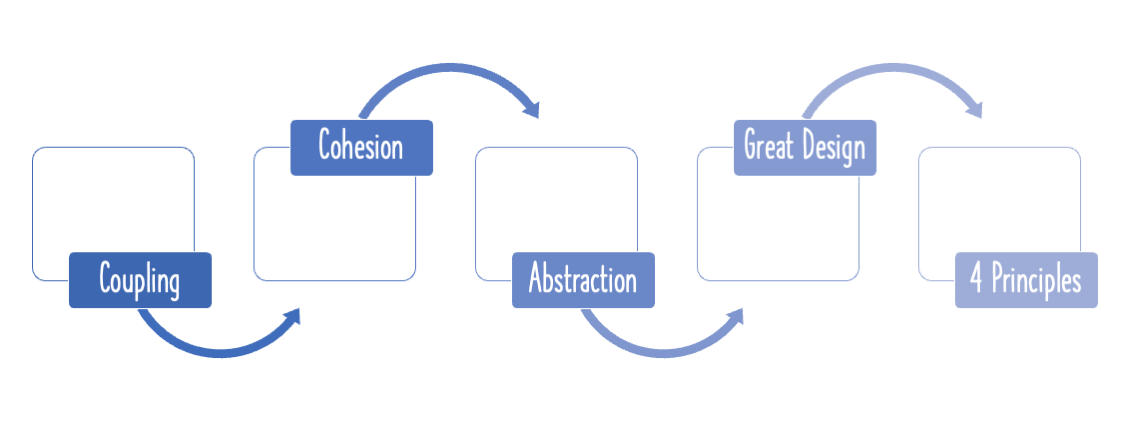Dependency Inversion Principle is one of the important SOLID Principles. Dependency Inversion Principle is implemented by one of the most popular Java frameworks - Spring. What is it all about? How does it help you design good applications?
You will Learn
- What is Dependency Inversion Principle?
- How are Dependency Inversion Principle and Spring Framework related?
- A few examples of Dependency Inversion Principle in action
Software Design Principles
This is the last article in a series of articles on important Software Design Principles:
- 1 - Introduction to Four Principles Of Simple Design
- 2 - Software Design - Separation Of Concerns - with examples
- 3 - Object Oriented Software Design - Solid Principles - with examples
- 4 - Software Design - Single Responsibility Principle - with examples
- 5 - Software Design - Open Closed Principle - with examples
- 6 - Software Design - What is Dependency Inversion Principle?
What Is Dependency Inversion principle (DIP)?
“Depend Upon Abstractions (interfaces), not Implementations (concrete classes)”
What does this statement mean? Let’s try understanding that with an example:
Let’s look at an example of what this means:
abstract class OutputDevice {
void copy(String device) {
Keyboard keyboard = new Keyboard();
int character;
while ((character = keyboard.read()) != -1) {
if (device.equals("Printer")) {
writeToPrinter(character);
} else {
writeToDevice(character);
}
}
}
private void writeToDevice(int character) {
// TODO Auto-generated method stub
}
private void writeToPrinter(int c) {
// TODO Auto-generated method stub
}
}
What does the copy() method do?
It reads a character from the keyboard, and then decides where this character needs to go. If it’s a printer, write to the printer. Else, send it to the disk.
The problem here is that as the number of OutputDevice types increase, the logic of copy() needs to change every single time.
Let’s look at an alternate implementation:
public interface Reader {
public char read();
}
public interface Writer {
public void write(char ch);
}
void copy(Reader r, Writer w) {
int c;
while((c = r.read()) != EOF) {
w.write(c);
}
}
What we have done here is define two separate interfaces, one to provide the read(), and the other to define the write() methods.
The responsibility of the copy() method is quite clear here: it reads from the Reader interface, and writes whatever it gets to the Writer interface.
copy() now focuses only on the actual operation, and it does so by identifying everything else as its dependencies.
It can now work with any implementation of Reader and Writer interfaces.
DIP and The Spring Framework
DIP is one of the core principles that the Spring Framework enables. Have a look at this example:
public class BinarySearchImpl {
public int binarySearch(int[] numbers, int numberToSearchFor) {
BubbleSortAlgorithm bubbleSortAlgorthm = new BubbleSortAlgorithm();
int[] sortedNumbers = bubbleSortAlgorithm.sort(numbers);
//...
}
}
BinarySearchImpl directly creates an instance of the BubbleSortAlgorithm. Note that BubbleSortAlgorithm is a dependency of BinarySearchImpl, and as we saw in our previous example, directly accessing it is not a great idea. If you want to switch from a bubble-sort to a quicksort algorithm later, you need to change quite a lot of code inside BinarySearchImpl.
Better Approach for BinarySearchImpl is to make use of an interface - sort algorithm. Here is how our modified code would look like:
public intrface SortAlgorithm {
public int[] sort(int[] numbers);
}
@Component
public class BinarySearchImpl {
@Autowired
private SortAlgorithm sortAlgorithm;
public BinarySearchImpl(SortAlgorithm sortAlgorithm) {
super();
this.sortAlgorithm = sortAlgorithm;
}
public int[] binarySearch(int[] numbers, int numberToSearchFor) {
int[] sortedNumbers = sortAlgorithm.sort(numbers);
//...
}
}
User of the BinarySearchImpl class, can also pass in a specific implementation of SortAlgorithm, such as a bubble-sort or a quick-sort implementation.
BinarySearchImplis decoupled from whichSortAlgorithmto use.
If you use the Spring framework, you could use the
@Autowiredannotation with theBinarySearchImplclass, to automatically auto wire an implementation of an available sort algorithm.
By applying the DIP, you make your code more testable. The test code could pass in dependency mocks to properly test the code.
Do check out our video on this:
Summary
Dependency Inversion is about identifying dependencies and externalizing them. You can use a framework like Spring to simplify Dependency Inversion. DIP makes your code more maintainable, reusable and testable.









